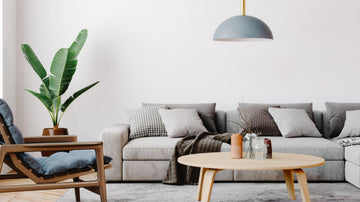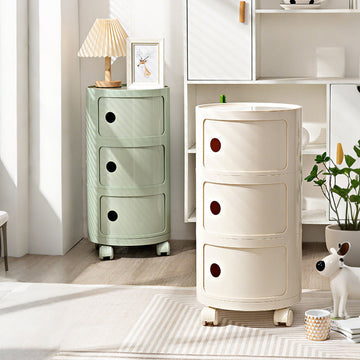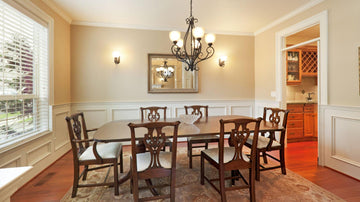Introduction: What We Think Minimalism Is—and What It Really Feels Like
You hear “minimalist living room,” and maybe what comes to mind is a white space with a single chair, maybe a plant, maybe nothing at all. A little too clean. A little too quiet. That’s the image we’ve been shown so often—it’s hard not to picture it.
But the good stuff? The real minimalist spaces you actually want to sit in, live in, mess up a little—they’re different. They aren’t just empty. They’re organized, sure, but they also breathe. They feel light, but not cold. Like someone thought about what matters and let the rest go.
I used to think minimalism meant taking away everything until the room felt sterile. But after spending time in homes that got it right, the feeling changed. It wasn’t about having less—it was about having what fits. A room with nothing extra, but nothing missing either.
And maybe that’s why we keep coming back to this style. Life is full of noise—visually, mentally, emotionally. Walking into a space that doesn’t push, doesn’t shout, just lets you be—that’s rare. It’s also why I’m writing this. Not to sell you on a trend, but to explore how a simpler living space can actually give you more. More ease. More clarity. Maybe even a little more peace.

The Design Thinking Behind Minimalist Living Rooms
Minimalism doesn’t mean boring. It means paying attention. Fewer things in a room means each one has to pull its weight. Not necessarily by being flashy—sometimes just by not getting in the way.
A good minimalist room doesn’t try too hard. It doesn’t feel styled—it just feels right. The layout flows naturally. You don’t trip over anything or wonder why a lamp is in the middle of the room. It’s subtle, but it works. Maybe that’s the point—it’s not loud about its design, because it doesn’t have to be.
Geometry plays a quiet supporting role. Straight lines, clean edges, balance that you don’t consciously notice but would miss if it were gone. And there’s often a little asymmetry tossed in on purpose—just enough to keep things from feeling too stiff.
Color holds back, but it’s not absent. You get soft greys, off-whites, pale wood tones—colors that don’t compete, just hold the structure together. Every now and then, a small surprise shows up. A forest green cushion. A deep blue lamp. Nothing wild, just enough to make you pause.
Lighting does more than brighten. It shapes the room. If you’ve got natural light, let it do its thing. If not, mix it up—overhead light, softer side lamps, a reading spot tucked in the corner. And don’t underestimate shadows. In a room with fewer distractions, even the way light falls becomes part of the design.

Planning the Space: Flow First, Furniture Second
A minimalist living room isn’t just about what you put in it—it’s about how it moves. You could have the cleanest sofa, the sharpest lines, the right number of shelves—and still end up with a space that feels off if you ignore how the room is used.
Start with the way people move through the space. Where do you naturally walk? Where do you sit when you’re tired? Can you get from one end of the room to the other without dodging edges or bumping knees? These things sound obvious until you bring in furniture that looks great online but doesn’t quite work in real life.
Open layouts have their appeal—airier, more connected—but they can also feel aimless without some kind of visual structure. You don’t need walls, but you do need intention. A rug can anchor a seating area. A floor lamp in the corner can suggest where the “end” of a room is. It’s less about dividing and more about suggesting zones.
Storage is one of those things that gets overlooked in minimalist spaces. People think minimalism means owning nothing. It doesn’t. It just means putting things away. Hidden storage—inside benches, behind smooth cabinet doors, under the sofa—is the secret to keeping a room calm without erasing your life from it.
And leave some space empty on purpose. Seriously. Not every corner needs a chair. Not every wall needs art. That quiet spot? It’s not wasted. It lets the rest of the room breathe.
Choosing Furniture That Doesn’t Shout
Furniture in a minimalist living room doesn’t need to be fancy. But it does need to be considered. You’re not just filling space—you’re shaping it.
The sofa’s usually the anchor, whether you like it or not. It’s where people sit, nap, scroll, spill things. So make it count. Look for something with clean lines, but don’t sacrifice comfort. A slightly curved back here, a soft armrest there—it makes a difference. And fabric matters. Linen feels relaxed. Leather feels structured. You don’t need to overthink it, but you’ll feel the difference every day.
Coffee tables are often underestimated. A low, simple piece does the job, but it can also tie the room together if you let it. Something circular in a mostly-rectangular space softens the edges. A slim metal frame with a stone or wood top adds contrast without adding bulk. Just make sure it’s not too high or too short—you want it to live with the sofa, not argue with it.
Accent chairs are where you can bend the rules a bit. You’ve been restrained everywhere else—here’s your chance to bring in that curved velvet piece or the sculptural one you saw in a gallery once. As long as it doesn’t throw off the balance, it can add just enough energy to keep things interesting.
Storage pieces—sideboards, cabinets, even bookshelves—shouldn’t draw too much attention. Think clean surfaces, no visible handles, doors that close quietly. If people walk in and don’t notice the storage, you’ve done it right.

Materials and How They Feel
Good minimalist rooms aren’t cold—they’re layered. And that layering doesn’t come from stuff. It comes from materials.
Metal, wood, glass, stone—each brings something different. Metal gives structure. Wood brings warmth. Glass lightens heavy corners. Mixing them creates contrast without clutter. You’re not just decorating—you’re setting the tone of the room.
Don’t be afraid of texture. A smooth leather sofa next to a rough wool rug? That’s balance. A matte black side table next to a glossy ceramic lamp? Same idea. These combinations create quiet tension—the kind that keeps a room from feeling flat.
Even plastic has its place, if it’s well made. Think molded chairs, translucent stools, maybe a light fixture that feels more like sculpture than function. It’s all about choosing pieces that feel intentional, not just convenient.
And remember: the finish matters as much as the material. A high-gloss surface reflects light and sharpens a space. A brushed finish softens it. Use one to highlight, the other to ground.
Color That Holds Back (But Never Disappears)
Color is one of the easiest ways to ruin a minimalist room—and one of the most powerful ways to elevate it.
Most minimalist spaces lean into a restrained palette: whites, greys, soft beiges, earthy browns. Not because color is bad, but because the eye needs rest. These tones form the base. They let shapes and light do the talking.
But that doesn’t mean color disappears completely. A single deep green chair or a rust-colored pillow in an otherwise quiet room can flip the whole mood—in a good way. You don’t need a lot. In fact, too much weakens the effect.
The trick is to keep the ratios in check. Let one color lead, another support, and a third whisper from the background. If you have too many things shouting for attention, the room stops feeling calm.
And don’t forget about light. The same paint can look wildly different in morning sun, afternoon shade, or under a cool bulb. Always test it in your actual space before you commit. What looks warm on Pinterest might feel icy in your home.

Lighting That Does More Than Illuminate
Lighting isn’t just functional—it’s architectural. And in a minimalist space, it’s one of the few tools you have to build mood.
Start with natural light. Use it, stretch it, let it bounce off pale walls and matte floors. Skip heavy curtains if you can. The more daylight you keep, the less you need to compensate later.
But when the sun goes down, you need layers. One overhead source won’t cut it. Add a floor lamp near the sofa. A reading light by the chair. Maybe a soft glow above the shelf. Each layer adds depth, and together they make the room feel lived in—even when it’s quiet.
Fixtures matter too. A geometric pendant. A barely-there wall sconce. Something sculptural that almost looks like art. In a space with fewer objects, even the light becomes part of the design.
And warmth matters. A cool light might look clean, but it can feel sterile fast. A warmer tone—something close to candlelight—usually plays nicer with wood, fabric, and skin.
When Less Means Better: The Role of Decor
Minimalist decor isn’t about blank walls. It’s about choosing a few things that actually matter—and letting them speak.
You don’t need much. A black-and-white print. A rough ceramic bowl. A plant with long, slow leaves. The goal isn’t to fill space. It’s to add rhythm, texture, and a little bit of soul.
Group things thoughtfully. One piece on a shelf. Three objects in a triangle. Repetition helps the room feel deliberate, not random. But don’t over-style. If you feel like you’re arranging a shop window, pause.
And keep some areas completely bare. Not every surface needs a vase. Sometimes the absence of decor is the most powerful choice you can make. It lets your eye rest—and the room breathe.
Minimalism sounds great in theory. But what about small apartments? Kids? Pets? Real mess?
It still works. You just have to be smarter with space.
In a smaller room, scale down your furniture. Choose a loveseat instead of a sectional. Use wall-mounted shelves instead of bulky bookcases. Mirrors help stretch the space visually, and multi-use pieces—like a bench that stores shoes—pull double duty.
If your space feels too cold, add warmth through texture: a thick rug, a linen throw, a wooden stool. If it feels too impersonal, bring in something that means something to you. A framed photo. A stack of old books. One or two items are enough.
And clutter? It happens. Minimalism isn’t about perfection. It’s about making it easier to reset the room when life gets messy. If everything has a place, cleaning up takes minutes—not hours.
Two Spaces, Two Stories
In a small city apartment, a minimalist living room was built around a single idea: everything visible had to be useful. A low-profile grey sofa sat against the wall. A slim black table held a lamp and a book. On the shelf: a plant, a speaker, and not much else. It wasn’t empty. It was efficient. And it felt calm in a way that surprised guests.
In a larger home, the living room took a different approach. A long oak bench ran the length of one wall, doubling as seating and storage. Above it, only one piece of art. The sofa was soft and wide, in a warm beige. The table was stone. The mood? Warm minimalism. Nothing felt missing—but you could still breathe.

Living With It: Maintaining Without Trying Too Hard
Minimalist spaces are easier to live with—once they’re set up—but they still need care.
Dust shows up faster when there’s less to hide it. Fingerprints on glass. Smudges on matte black. Nothing dramatic, but you’ll notice. A quick weekly wipe-down usually keeps things in check.
Different materials need different attention. Wood likes oil now and then. Leather needs conditioning. Fabric cushions might need a shake or a vacuum. But honestly, simpler rooms are just easier to manage.
And over time, you might want to change things. Swap out a lamp. Replace a rug. That’s fine. Minimalism doesn’t mean static. It just means staying intentional. If something new adds value—or joy—let it in.
The Point Isn’t Less. It’s Clarity.
People think minimalism is about having nothing. It’s not. It’s about clearing enough space to notice what you do have—and what actually matters.
A minimalist living room doesn’t need to be perfect. It just needs to feel easy. Like you can breathe a little deeper when you walk in. Like your stuff isn’t running the room—you are.









